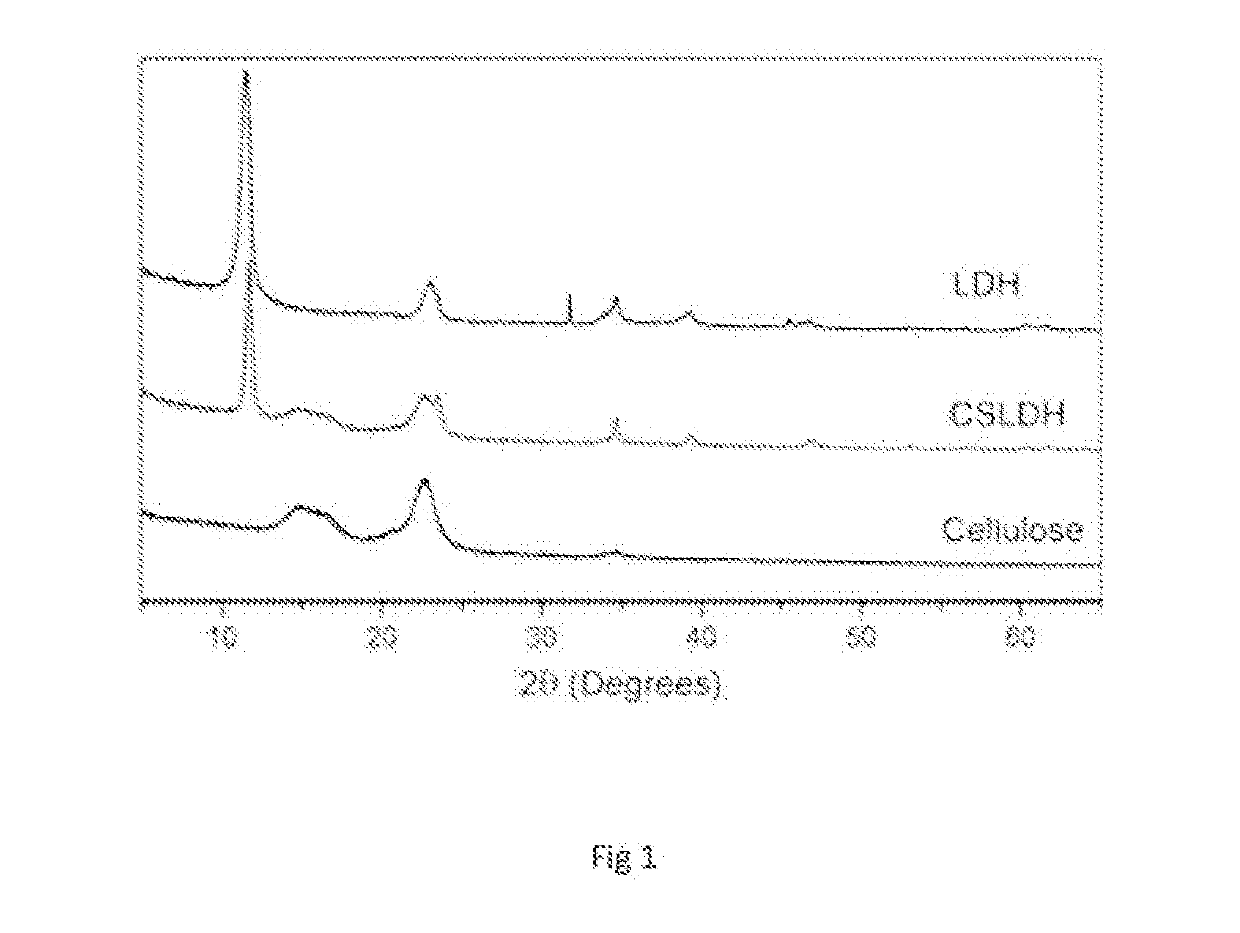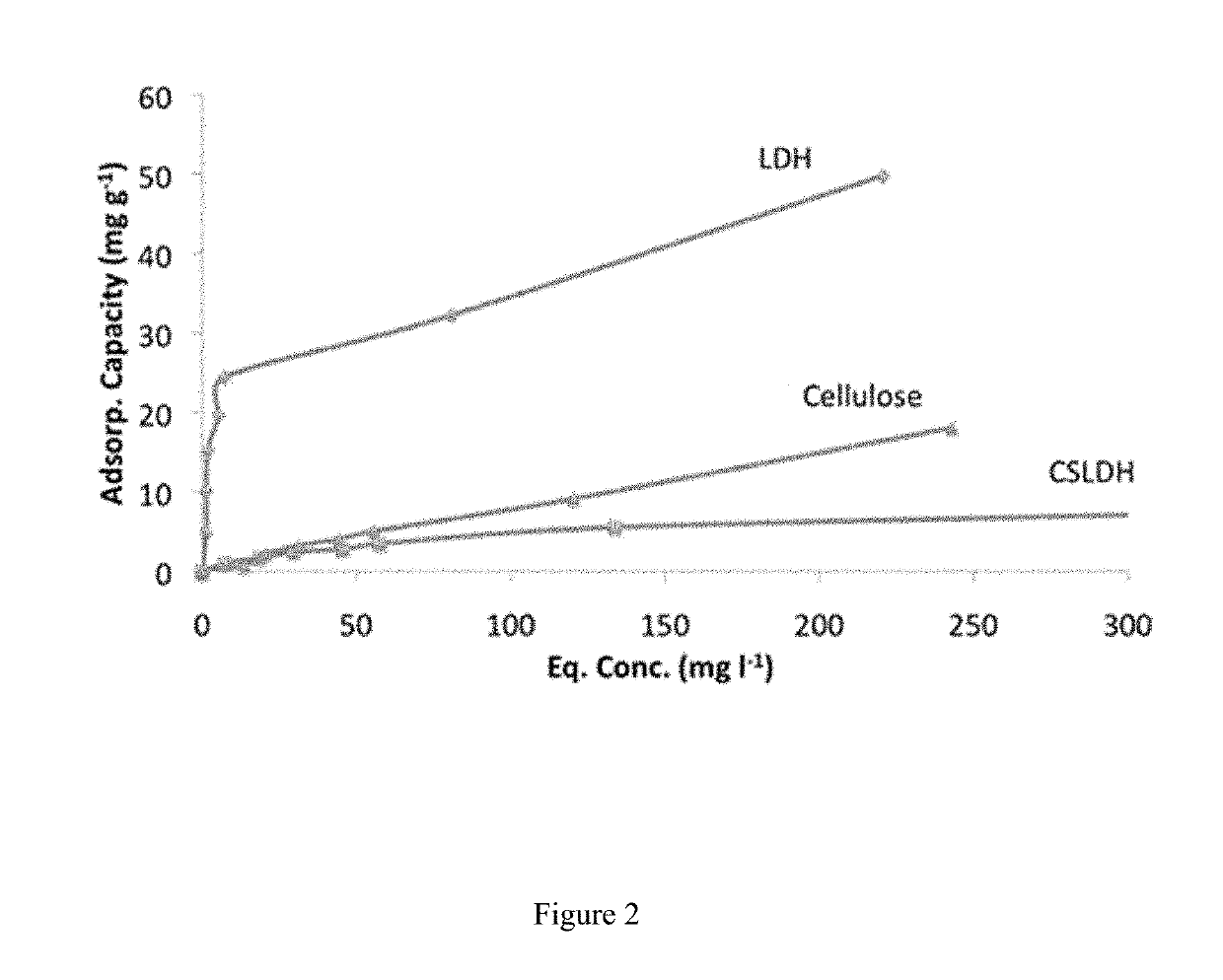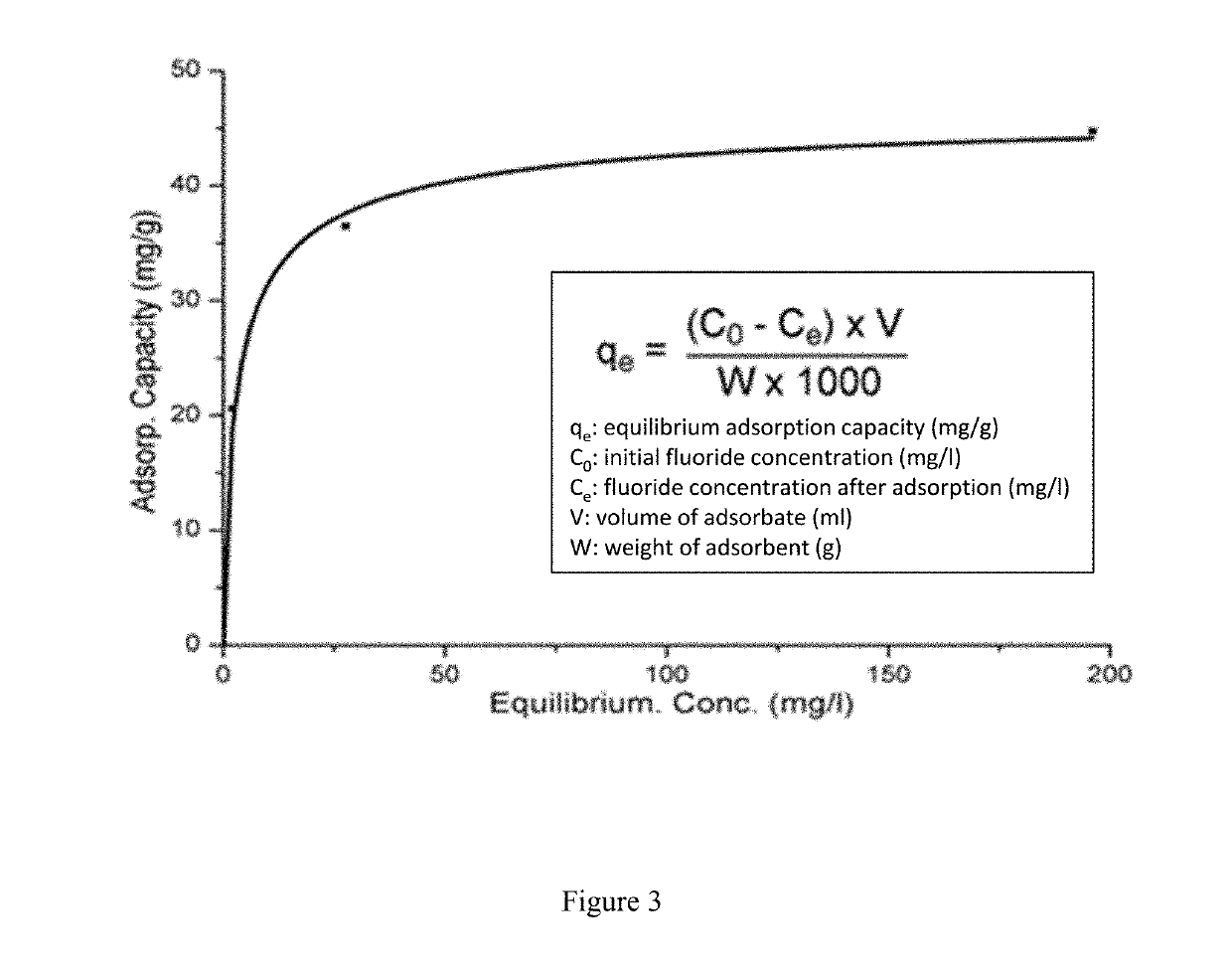Dental Composition
a technology of dental composition and composition, applied in the field of dental composition, can solve the problems of dental fluorosis, limited capacity of glass ionomer cement, and few products that have the ability to absorb fluorid
- Summary
- Abstract
- Description
- Claims
- Application Information
AI Technical Summary
Benefits of technology
Problems solved by technology
Method used
Image
Examples
example 1
of LDH
[0060]Methods described by Mandal and Mayadevi (Chemosphere 72 (2008) 995-998) were followed.
[0061]Briefly, 0.852 g Zinc Chloride (ZnCl2) and 0.8335 g aluminium chloride (AICIs) were added to 25 cm3 of deionised HaO to make a 0.5M solution. This ZnCl2—AlCl3 salt solution was titrated simultaneously with 2M NaOH from 2 burettes into a beaker containing 25 cm3 of deionised water. The flow rate of NaOH into the beaker was adjusted to ensure that a pH of 10±1 was maintained throughout, and was measured continuously with a pH electrode. The solution was stirred continuously. The final solution was left to age for 24 h, after which the solution was topped up to 100 cm3 by adding deionised H2O and divided into 4 universal tubes containing 25 mls each. These samples were centrifuged for 3 min at 3000 rpm. The supernatant was pipetted off and pH checked with litmus paper, before rinsing the pellet and re-suspending it in 25 cm3 deionised H2O and centrifuging again. This was repeated un...
example 2
n Isotherm of Fluoride on LDH
[0064]Serial dilutions of 0.01M, 0.0075M, 0.005M, 0.0025M, 0.001M, 0.0005M and 0.00001M were made from a sodium fluoride (NaF) stock solution (0.1 M). A fluoride ion selective electrode was calibrated using these concentrations starting with the highest concentration and leaving the probe in the solution and recording the mV reading at 3 min intervals until 2 consecutive readings within ±0.3 mV of were achieved. LDH (0.4 mg) was weighed into 15 ml universal tubes and 10 cm3 of NaF solution (0.01, 0.005, 0.0025, 0.0020, 0.0015, 0.0010, 0.0005 M) added and the samples agitated at 25° C. for 60 min.
[0065]After 60 min the remaining fluoride in solution was measured with the ion selective electrode for 3 min and then repeatedly at intervals until the reading remained consistent (±0.3 mV). This was repeated for each of the three samples measured. The fluoride uptake could be determined from the decrease in fluoride concentration in solution (FIG. 2). Table 1 b...
example 3
n of Fluoride by LDH
[0068]Samples of LDH previously immersed in NaF solutions were centrifuged for 3 min at 3000 rpm, and all supernatant removed. They were then re-suspended in 10 ml deionised H2O. Fluoride measurements were made using the fluoride ion selective electrode and readings were taken at 3 and 6 min intervals and then samples were left stirring for 1 h before re-measuring the fluoride concentration of the solution. Readings were taken again after 72 h, with the samples being stirred continuously. The results are displayed in Table 2 below. Each of the samples measured highlighted that the LDH material slowly releases the adsorbed fluoride over time.
TABLE 2Adsorptiont = 0t = 1 ht = 72 hInitial Conc. (M)Conc. (M)Conc. (M)Conc. (M)0.00058.66E−076.84E−072.13E−060.0011.54E−061.78E−064.21E−060.00151.94E−062.28E−066.17E−060.0023.33E−064.17E−068.94E−060.00256.04E−066.48E−061.13E−050.0051.48E−052.79E−054.15E−050.017.26E−061.05E−051.45E−05
PUM
 Login to View More
Login to View More Abstract
Description
Claims
Application Information
 Login to View More
Login to View More - R&D
- Intellectual Property
- Life Sciences
- Materials
- Tech Scout
- Unparalleled Data Quality
- Higher Quality Content
- 60% Fewer Hallucinations
Browse by: Latest US Patents, China's latest patents, Technical Efficacy Thesaurus, Application Domain, Technology Topic, Popular Technical Reports.
© 2025 PatSnap. All rights reserved.Legal|Privacy policy|Modern Slavery Act Transparency Statement|Sitemap|About US| Contact US: help@patsnap.com



